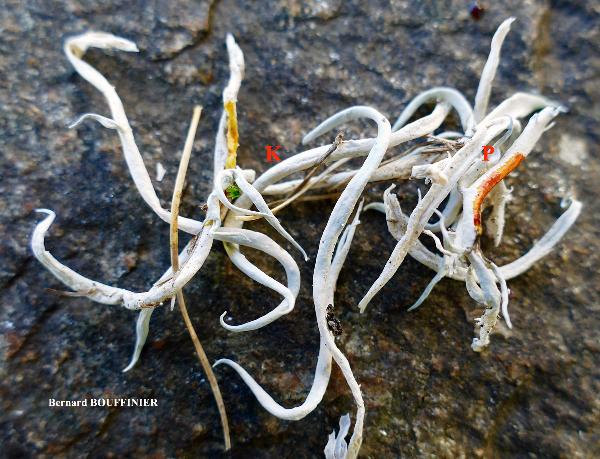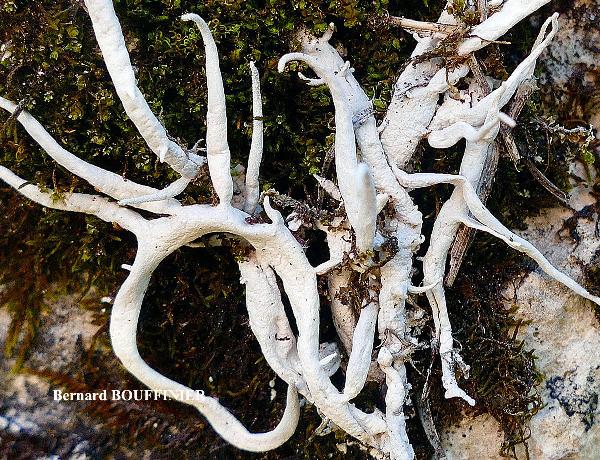Thamnolia vermicularis (Sw.) Schaerer subsp. vermicularis chem. squamatic acid
Lichen vermicularis Sw,, Meth. Musc.: 37, 1781
Synonyms: Thamnolia subuliformis (Ehrh.) W.L. Culb.; Thamnolia subvermicularis Asahina; Thamnolia vermicularis var. subuliformis (Ehrh.) Schaer.
Distribution: N - Frl (TSB 318), Ven (Nascimbene & Caniglia 2003, 2003c), TAA (Bilovitz & al. 2014b), VA (Valcuvia 2000, Piervittori & al. 2004).
Description: Thallus fruticose, pure white, remaining white in the herbarium, erect or decumbent, often forming tufts. Thallus units 1-2(-3) mm thick (rarely to 8 mm), worm-like, usually to 5 (rarely to 10) cm tall, more or less cylindrical, with pointed apices, smooth, non squamulose, simple or rarely sparingly branched in upper part. Cortex of longitudinally arranged hyphae; medulla thin, soon becoming hollow. Apothecia not known. Pycnidia poorly evident, immersed, initially covered by cortical tissue, flask-shaped to broadly globose, the wall colourless throughout, uni- or rarely bilocular, densely filled with long, parallel conidiophores comprising erect chains of intercalary conidiogenous cells with bayonet-like processes near the upper cell septum. Conidia bacilliform, slightly tapering at one end, 3-5 x 1-2 µm. Photobiont chlorococcoid. Spot tests: K+ yellowish, C-, KC-, P+ yellow, UV+ yellowish white. Chemistry: baeomycesic and squamatic acids. Note: an arctic-alpine, circumpolar lichen found in open, wind-exposed Alpine tundras; much rarer in the Italian Alps than the typical variety.
Growth form: Fruticose
Substrata: soil, terricolous mosses, and plant debris
Photobiont: green algae other than Trentepohlia
Reproductive strategy: mainly asexual, by thallus fragmentation
Commonnes-rarity: (info)
Alpine belt: very rare
Subalpine belt: extremely rare
Oromediterranean belt: absent
Montane belt: absent
Submediterranean belt: absent
Padanian area: absent
Humid submediterranean belt: absent
Humid mediterranean belt: absent
Dry mediterranean belt: absent
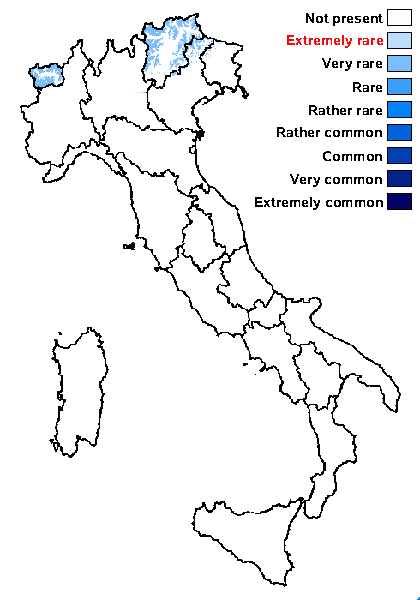
Predictive model
Herbarium samples
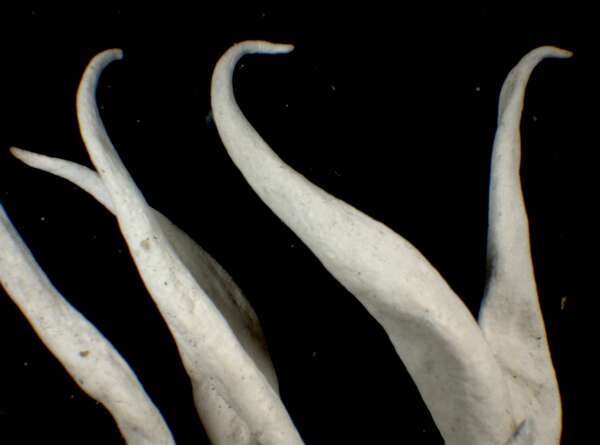

P.L. Nimis; Owner: Department of Life Sciences, University of Trieste
Herbarium: TSB (11383)
2001/12/11
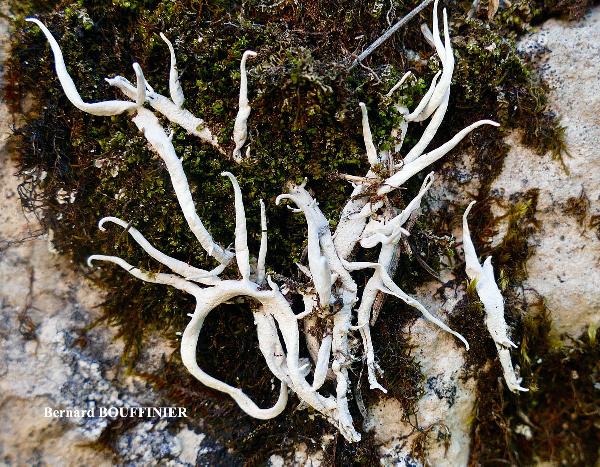
Bernard Bouffinier - Source: http://www.lichensmaritimes.org/index.php?task=fiche&lichen=937&lang=en
France, Comus 1200 m
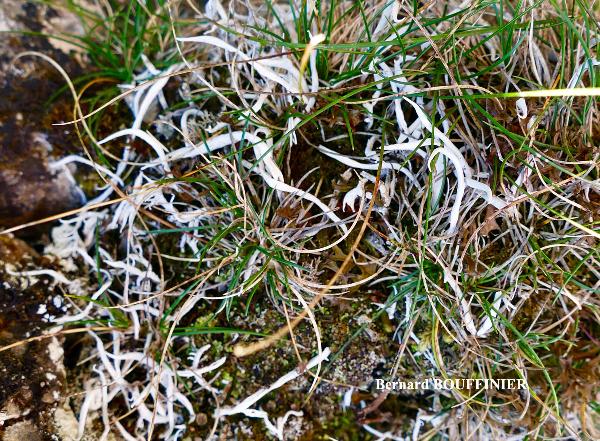
Bernard Bouffinier - Source: http://www.lichensmaritimes.org/index.php?task=fiche&lichen=937&lang=en
France, Comus 1200 m

Bernard Bouffinier - Source: http://www.lichensmaritimes.org/index.php?task=fiche&lichen=937&lang=en
France, Comus 1200 m
Growth form: Fruticose
Substrata: soil, terricolous mosses, and plant debris
Photobiont: green algae other than Trentepohlia
Reproductive strategy: mainly asexual, by thallus fragmentation
Commonnes-rarity: (info)
Alpine belt: very rare
Subalpine belt: extremely rare
Oromediterranean belt: absent
Montane belt: absent
Submediterranean belt: absent
Padanian area: absent
Humid submediterranean belt: absent
Humid mediterranean belt: absent
Dry mediterranean belt: absent

Predictive model
| Herbarium samples |


P.L. Nimis; Owner: Department of Life Sciences, University of Trieste
Herbarium: TSB (11383)
2001/12/11

Bernard Bouffinier - Source: http://www.lichensmaritimes.org/index.php?task=fiche&lichen=937&lang=en
France, Comus 1200 m

Bernard Bouffinier - Source: http://www.lichensmaritimes.org/index.php?task=fiche&lichen=937&lang=en
France, Comus 1200 m

 DOLICHENS
DOLICHENS

